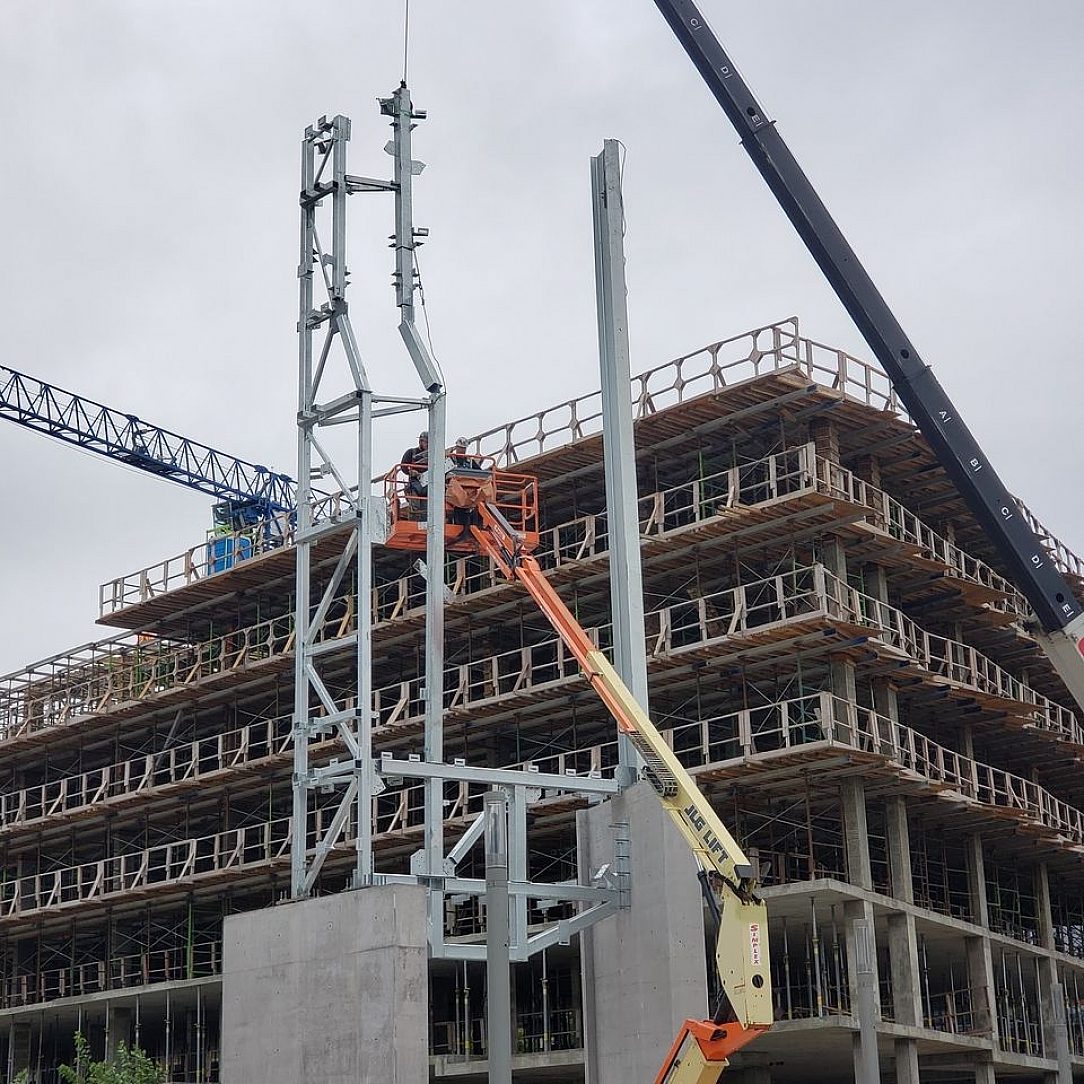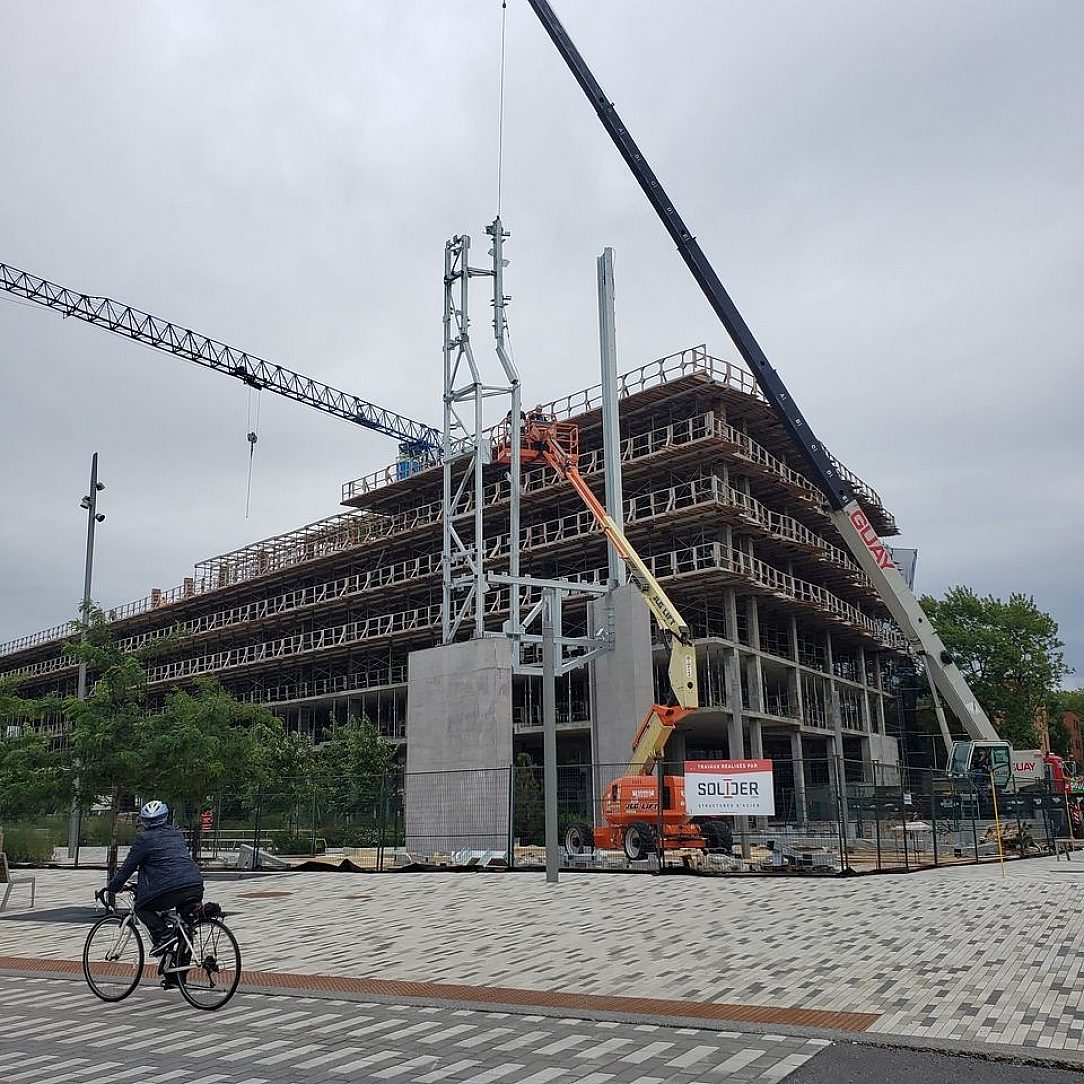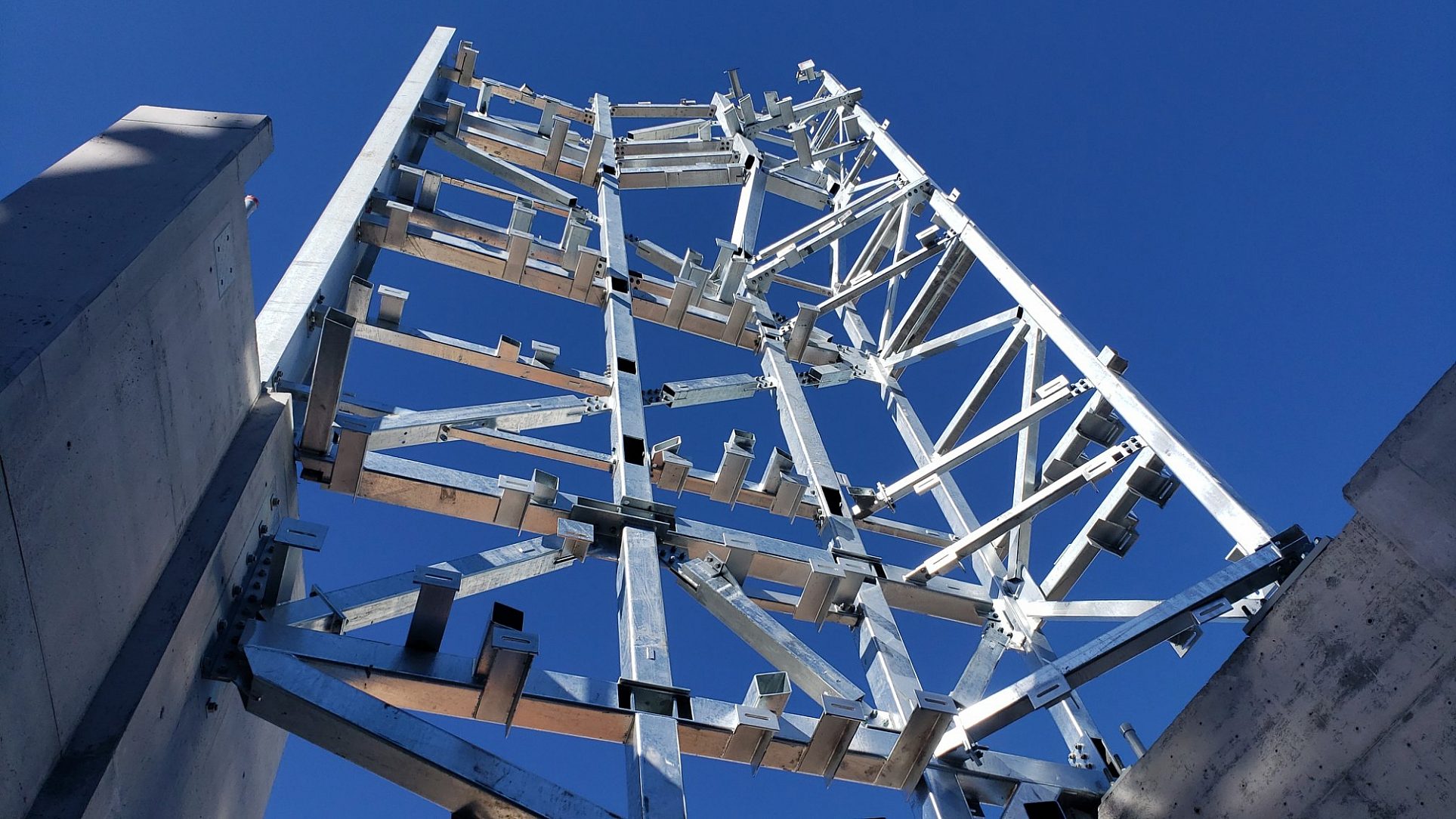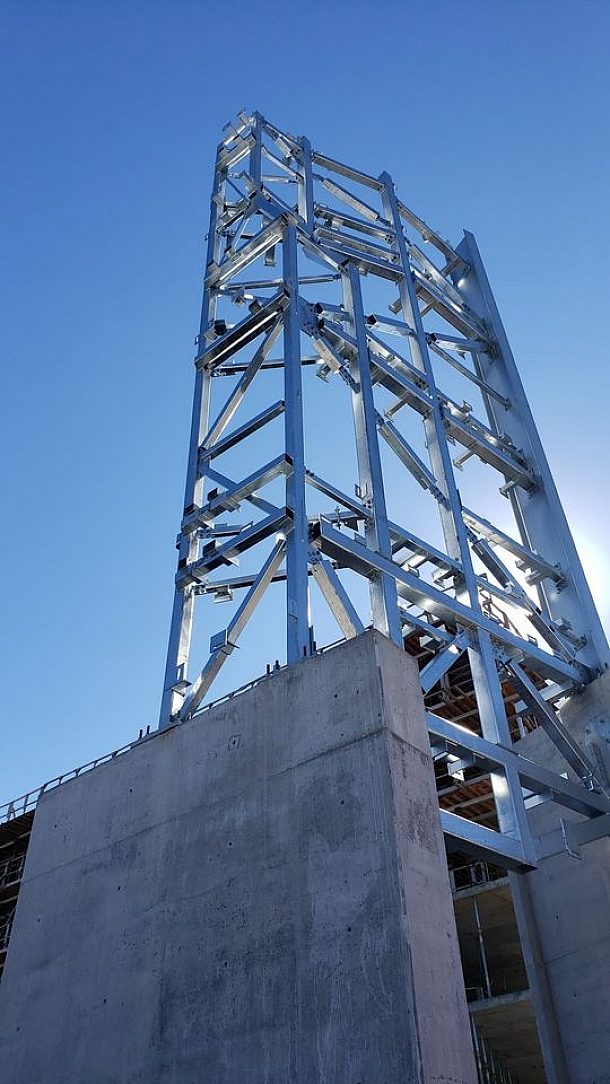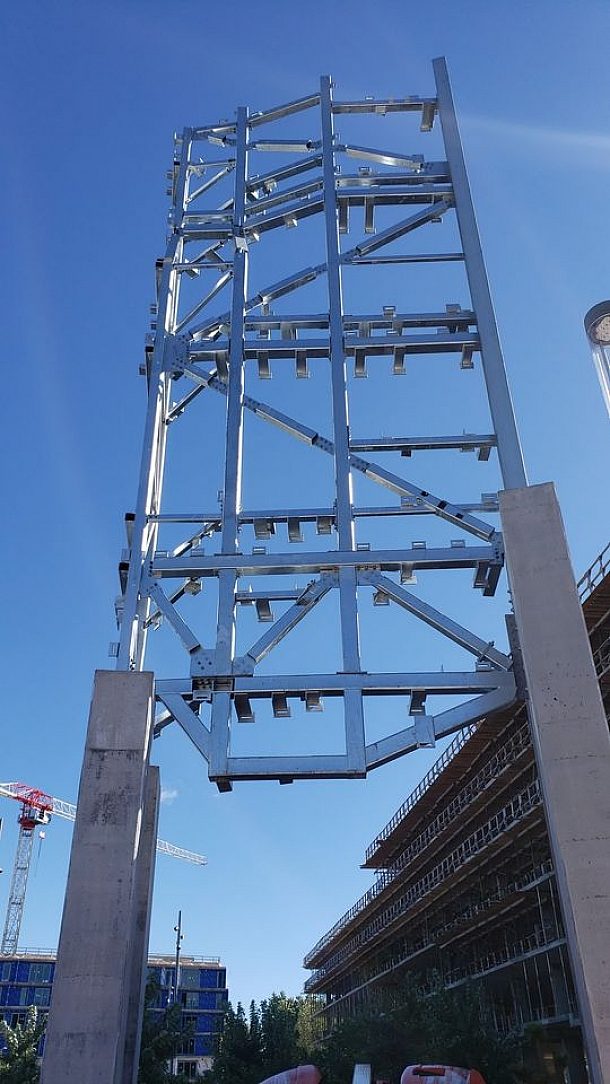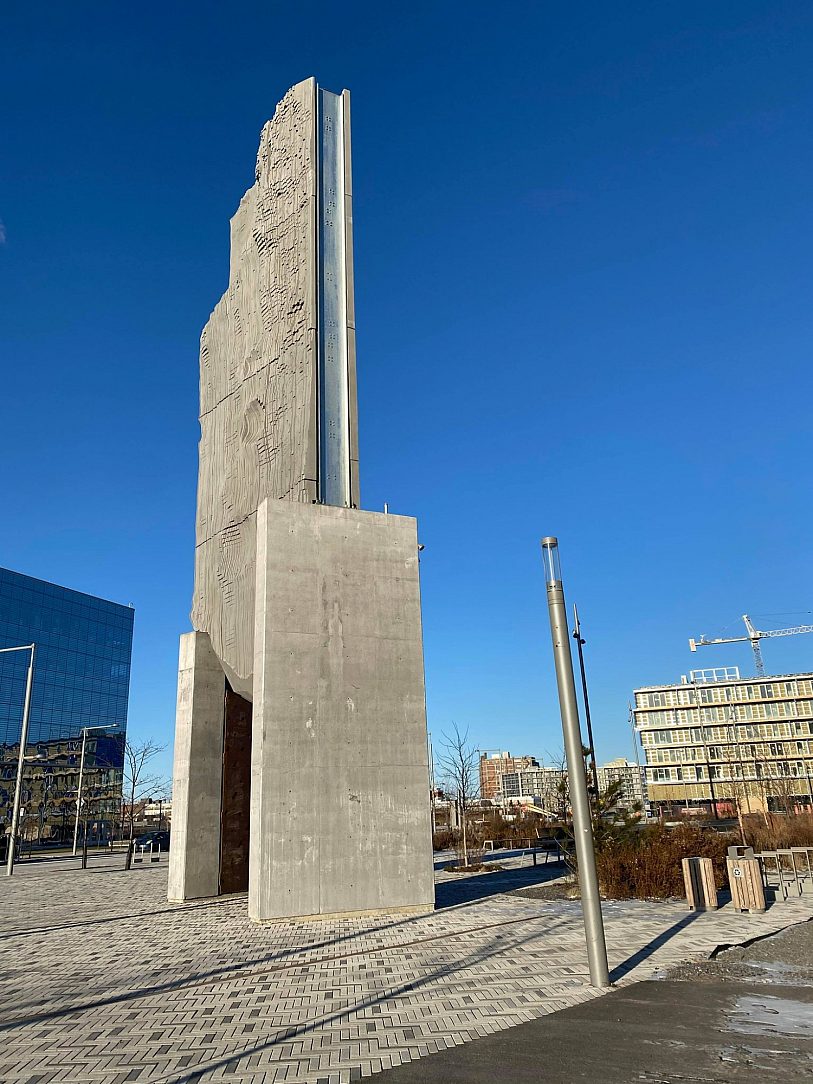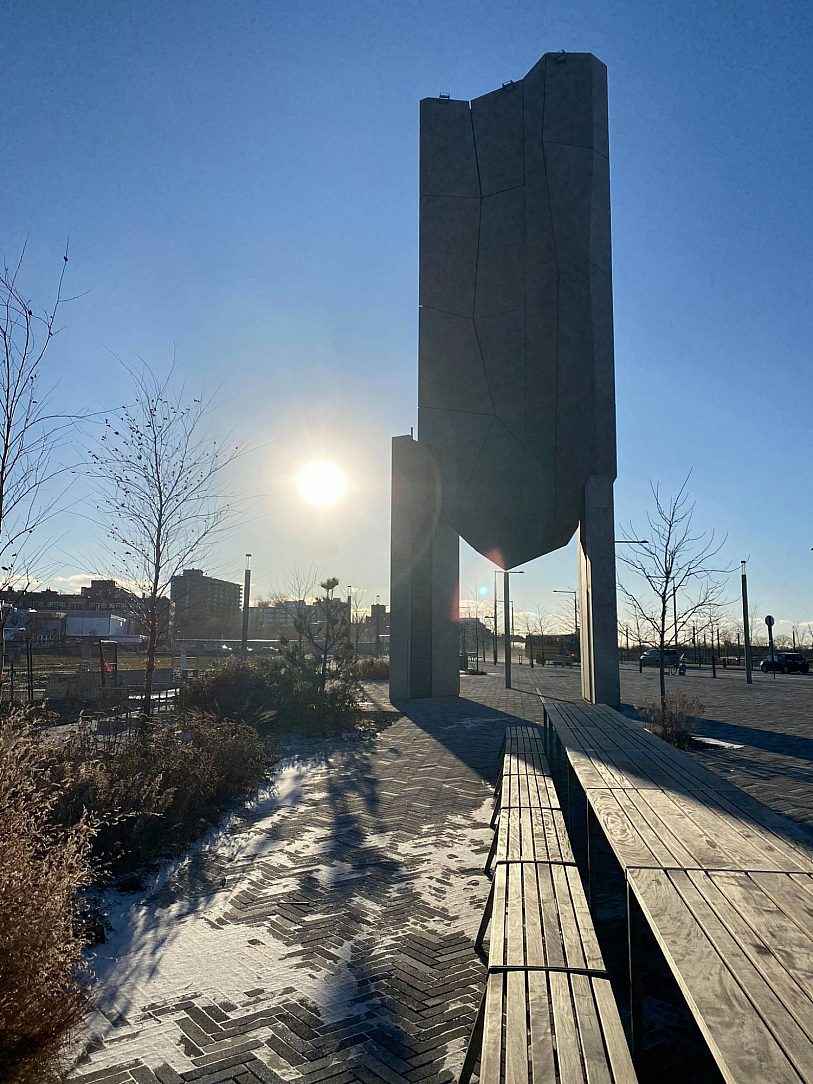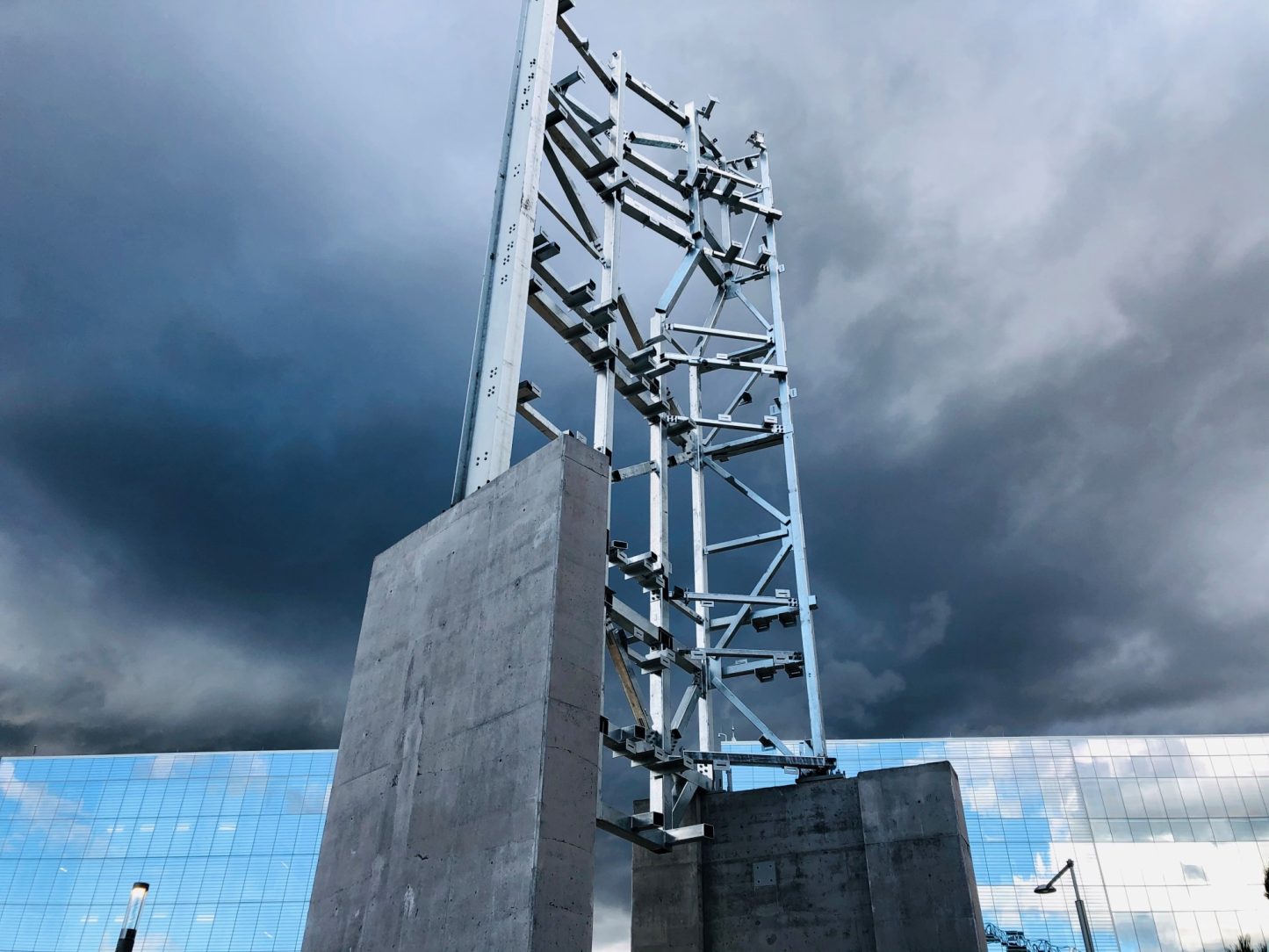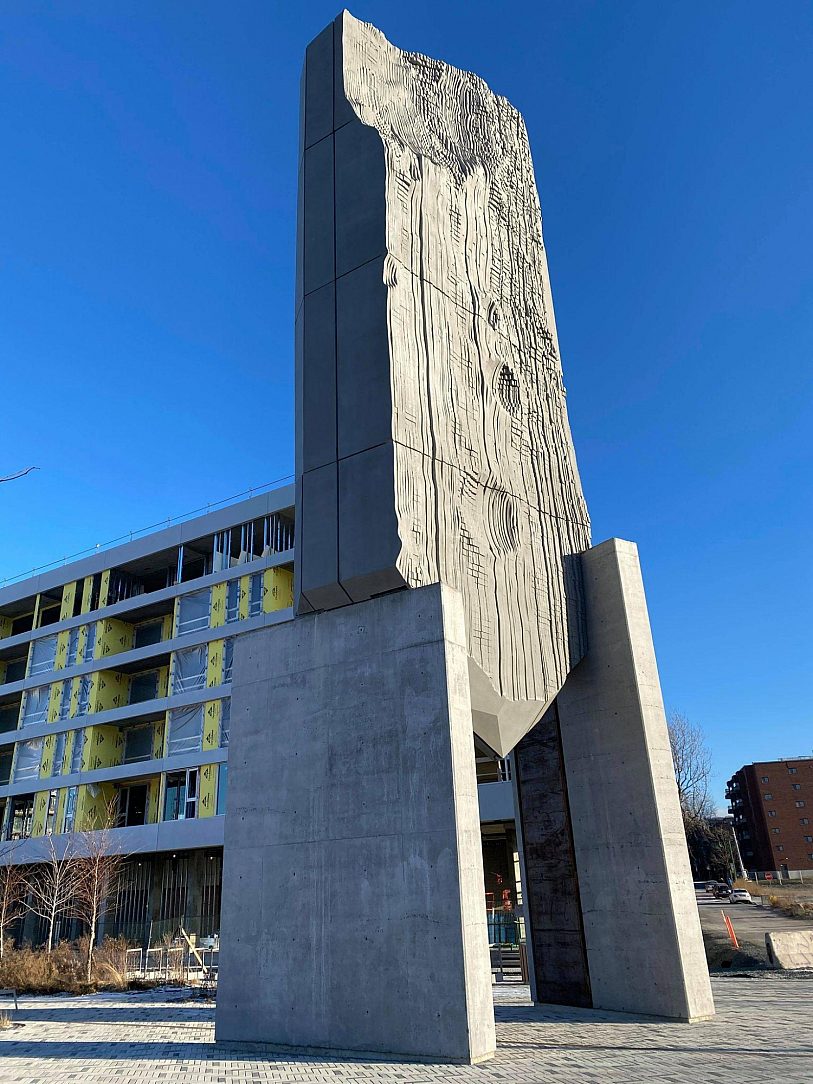Menu • Quick Links • Search
Login
CloseThe University of Montreal, the preeminent French language university in Canada has big plans for its new MIL sciences campus in the heart of Montreal and was looking for a piece of artwork that would reflect their goals for the campus in a striking manner. After reviewing dozens of applications one project was so “right” that the judges chose it unanimously.
Enter artist Patrick Bernatchez and his vision for a nearly 70-foot-high two-sided moonscape named "29.53" for the length in days of a lunar phase. With this new sciences campus opening on the 50th anniversary of the 1969 American moon landing the association was natural. Even now, half a century later if you had to imagine the single most tangible symbol of human scientific achievement it would obviously be leaving our planet and putting man on another celestial body. To signal future students to the power of science he envisioned a vertical concrete slab, one side representing a cratered moonscape near the Apollo 11 landing site and the opposing side the smooth bolder speckled surface of the dark side of the moon.
The suspended nature of the sculpture required a hidden structural core. This core needed to be strong enough to support this heavy slab yet also be durable enough to last a minimum of 75 years without repair as established by the committee. The symbiotic relationship of steel and concrete was the obvious solution, but the harsh reality of the Canadian urban climate had made clear the limitations of that relationship.
To the embarrassment of local engineers one of the first things a visitor to Montreal will notice is the litany of crumbling concrete infrastructure everywhere you look. The result of unprotected steel rebar in concrete meeting harsh Canadian winters. When steel rebar corrodes its density decreases by 16-fold, or more relevantly it expands 16-fold, popping concrete like a weed growing through an asphalt driveway.
The solution to this dangerous and costly problem had already proven itself, Hot-Dip Galvanizing! The earliest fully hot-dipped bridges in the world were galvanized right here in Montreal and those bridges, some now 70 years old are still corrosion free today.
So, this secretly protected sculpture which draws the eyes and hands skyward should continue to inspire students for countless lunar phases as they dream of their own future contribution to human achievement.
Details
Award Class
Newly Complete
Award Sectors
Artistic
Environment
Industrial/Urban
Location
Outremont, QC Canada
Reasons for Galvanizing
Coating Durability, Corrosion Performance, Prior HDG Experience, Sustainability
Components Galvanized
All the inside steel used to support the concrete sculpture
Tonnage/Size
Steel: 12
HDG: 12
Team Members
Fabricator
Les Aciers Solider inc.
Specifier
Ville de Montréal
Engineer
Latéral conseil
Others
Groupe Unigesco, Verdun
Member Galvanizer(s)
Galvanisation Quebec - Princeville
Thank you! Your vote has been accepted.

